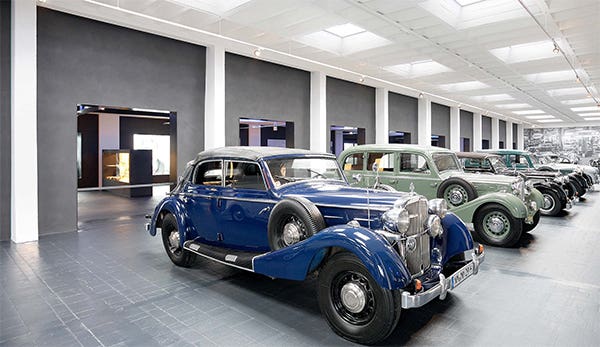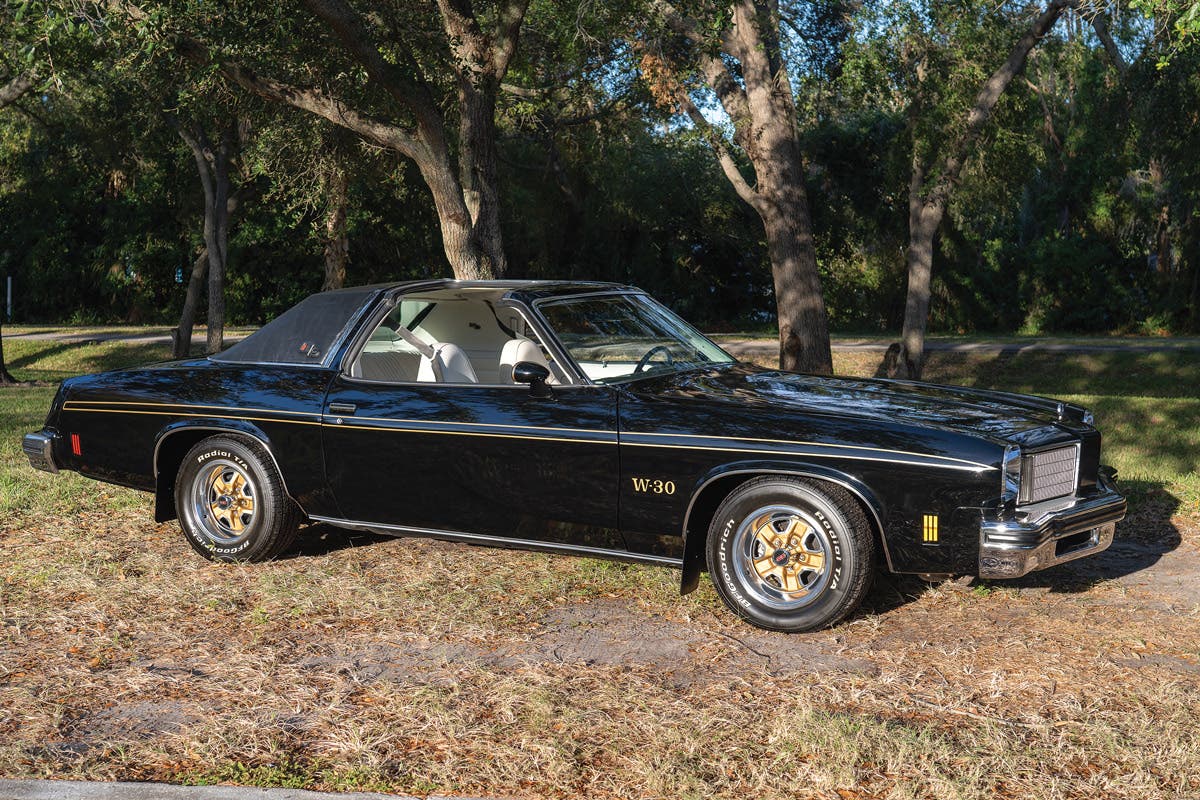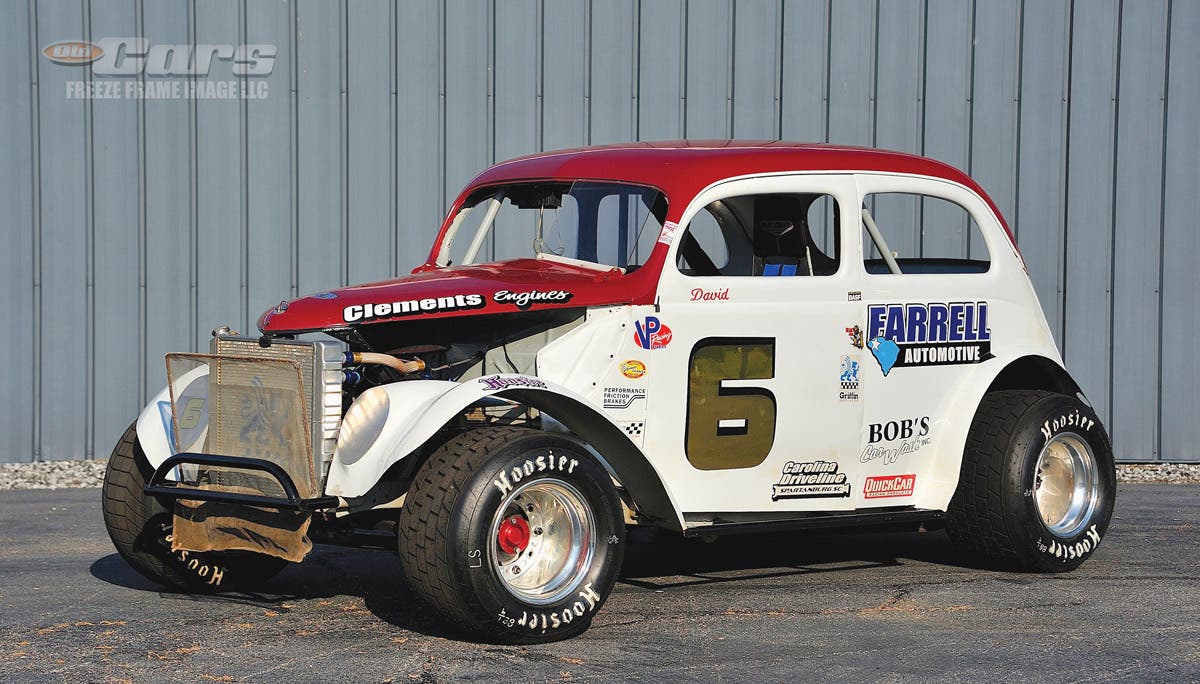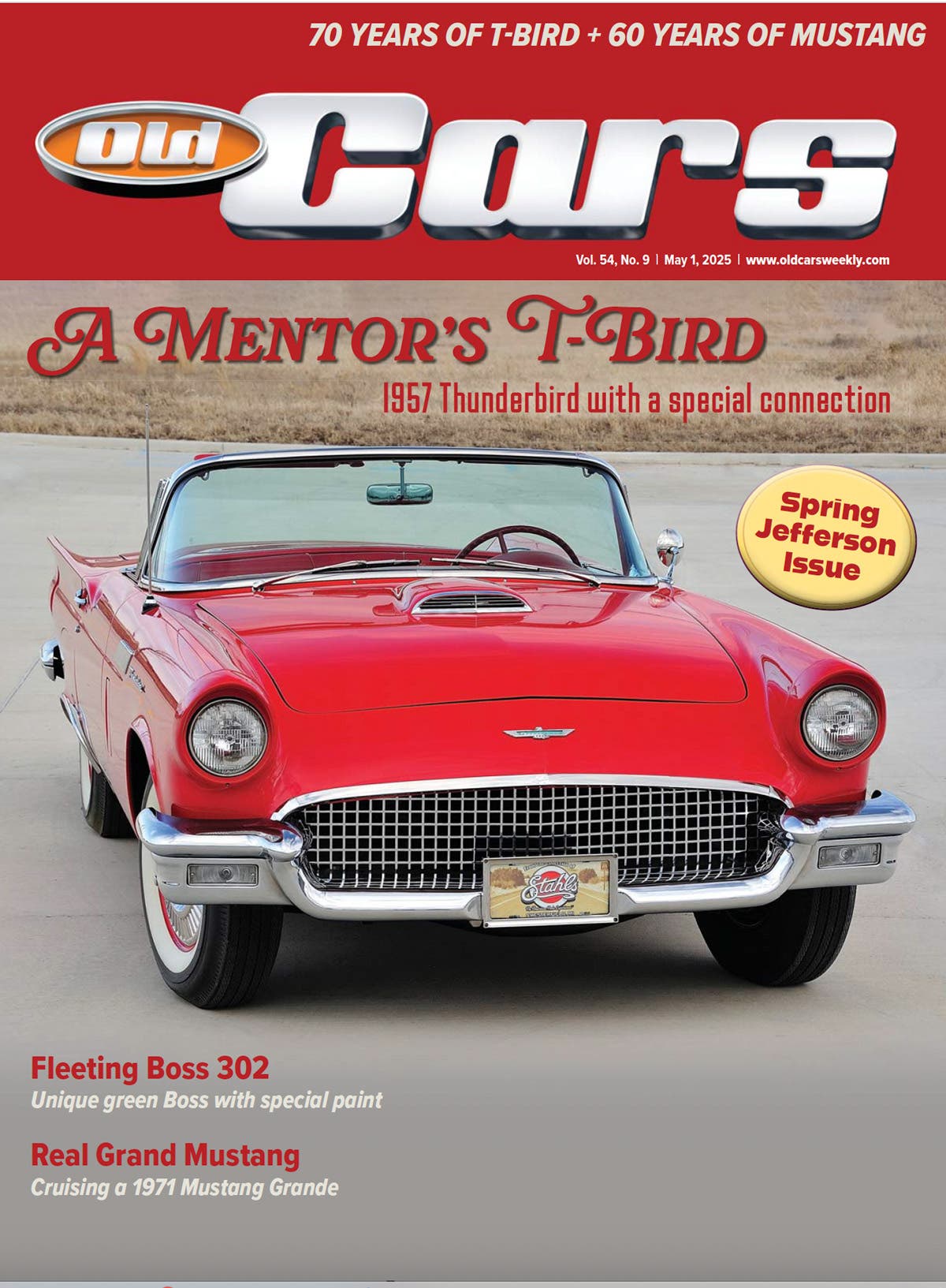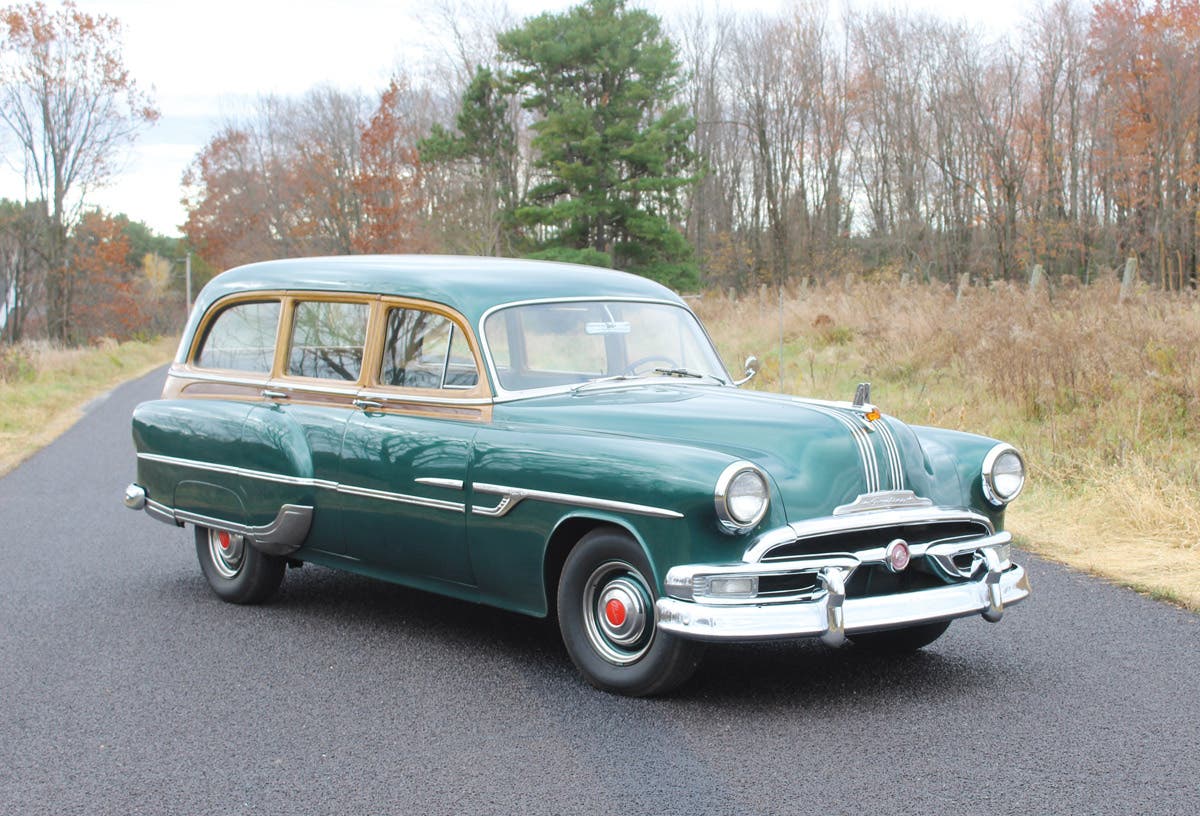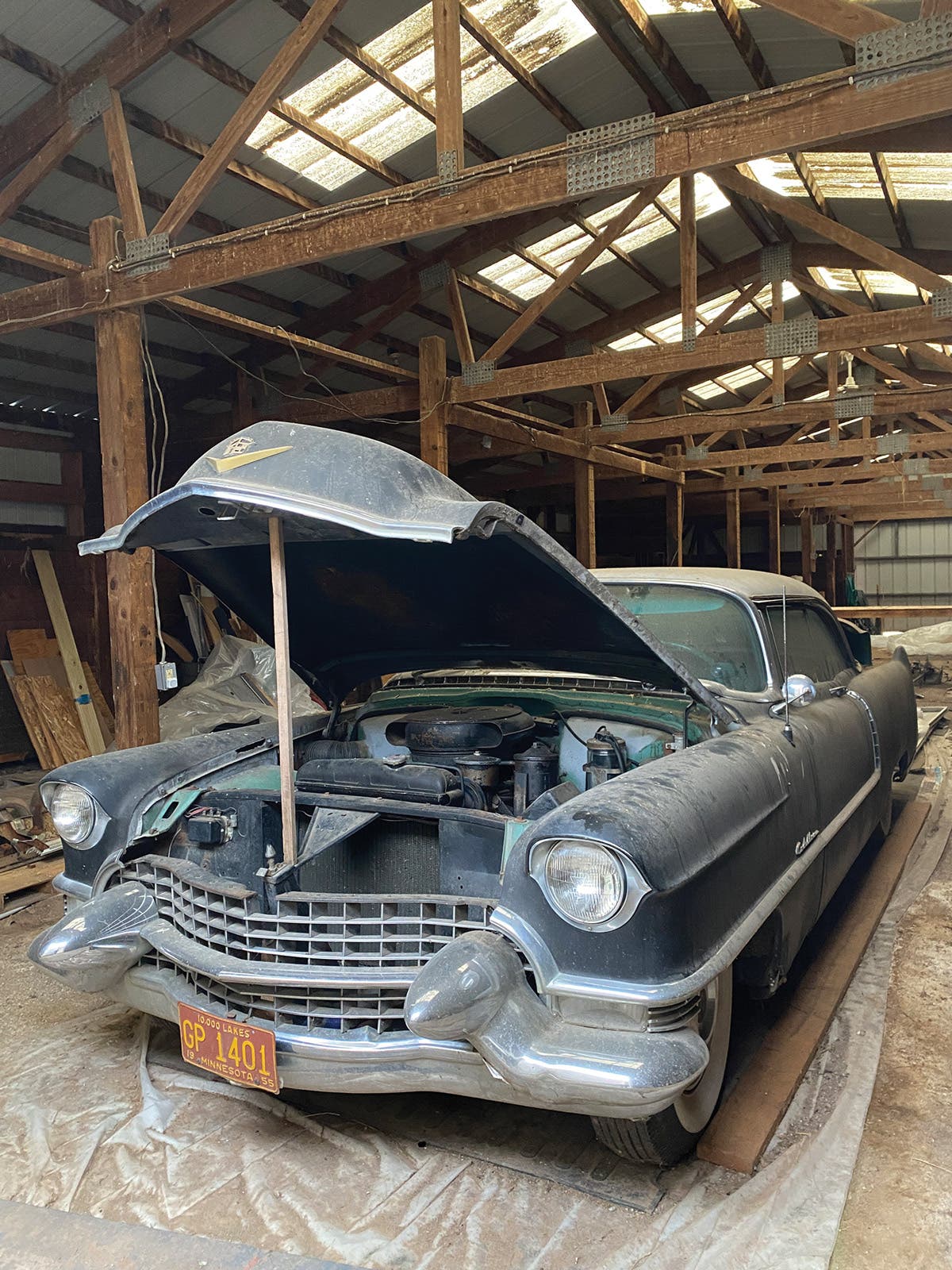Q&A with Kit Foster: November 27, 2014
Q. I have had an NOS fender for a few years and neither myself nor others have been able to identify it. I was once told it was Packard and…
Q. I have had an NOS fender for a few years and neither myself nor others have been able to identify it. I was once told it was Packard and this upset a few old-timers when I had a friend take it to Hershey. They said they thought it was late 1920s Dodge and was formed at the back for wood running boards. It is welled for a spare and has four holes on top for mounting the light bar. The part number is 26953.
— Mike Gorski, via e-mail
A. It does look rather “Dodgy” to me (sorry), but during the late 1920s Dodge built a number of models during given years with different sheet metal. Adding to the confusion, there were often two series a year, one of which was offset by some six months from the actual calendar year. Some Dodge models had a pointed embossed pattern on the forward crown, extended several inches rearward, which your fender does not have. Dimensions would be helpful, too, I’m thinking perhaps 1930.
Heeding the advice of Bob Adler (below), I googled that part number, with and without adding “Dodge fender.” I came up empty, so, readers, over to you!
-------------------------------------------------------------
Q. Regarding Francisco Castillo’s request for axle bumpers for his 1966 Impala, I’ve helped Mr. Castillo with numerous Chevy parts over the decades, but realized original used rubber/steel under-car parts would not be salvageable. As a general rule, I use Chevrolet parts books to find the original part numbers, and then do an internet search for that number. Many manufacturers who faithfully reproduce parts identify them by original part numbers, which gives us an instant cross reference. The original parts books also help with proper terminology for that make, as there is no industrywide consensus on naming parts. In Mr. Castillo’s case, the part number search yielded Steele Rubber Products. I knew they manufactured a quality part. Problem solved.
As an aside, around 40 years ago, I asked Lynn Steele why his rubber parts were so darn expensive. He patiently explained the intricacies of tool and die making for small batches, and convinced me the pricing was justified.
— Bob Adler, AdlersAntiqueAutos.com, Stephentown, N.Y.
A. Thanks for helping Mr. Castillo. He reports that the axle bumpers from Steele Rubber Products are newly installed on his car. Your point about searching for part numbers is well taken. I’ve used this technique many times to identify parts that come with a number but no other information. Of course, in searching for parts you have to be able to look up part numbers to start with. I have some parts catalogs, mainly for cars I have owned or had an interest in, but not wide coverage. That’s where the serious marque collectors are often able to help, and both OCW staff and readers appreciate it.
-------------------------------------------------------------
Q. In the Q&A of July 24, the “headlights” Ms. Anderson wants to identify have an outside diameter of only 7 inches — a few inches smaller than a typical headlight of the era. Since they have mounting brackets quite unlike any normal headlight would have, I would suggest the likelihood that these are actually a secondary set of lights rather than being headlights, and that they would have been mounted to some bar or surface between the actual headlights of the car they came from. That still leaves their origin a head-scratcher, but with perhaps a different direction to research.
— Keith Boonstra, Holland, Mich.
A. Thank you for that idea, which is apropos considering that even headlight experts were stumped.
To submit questions to this column: E-mail angelo.vanbogart@fwmedia.com or mail to: Q&A, c/o Angelo Van Bogart, 700 E. State St., Iola, WI 54990-0001.
Got Old Cars?
If you don't subscribe to Old Cars Weekly magazine, you're missing out on the only weekly magazine in the car hobby. And we'll deliver 50 issues a year right to your mailbox every week for less than the price of a oil change! Click here to see what you're missing with Old Cars Weekly!
More Resources for Car Collectors:
- Classic car price guides, research, books, back issues of Old Cars Weekly & more
- Get expert restoration advice for your classic car
- Get car pricing, data and history all in one place
- Sign up for Old Cars Weekly's FREE email newsletter
- Need to buy or sell your classic car? Looking for parts or memorabilia? Search our huge online classified marketplace



